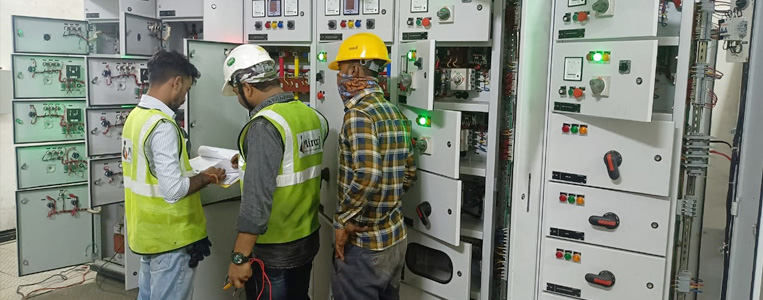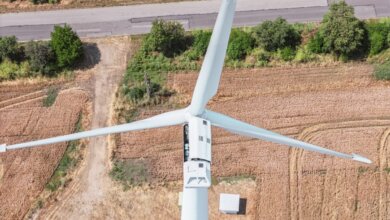A Complete Guide to HV Testing and Commissioning Australia

In today’s fast-evolving industrial and utility sectors, the demand for uninterrupted power and operational efficiency has never been higher. This is where HV Testing and Commissioning Services play a vital role. In Australia, these services ensure that electrical systems operate safely, reliably, and in compliance with national standards. Whether it’s a new power installation or an upgrade to existing infrastructure, HV Testing and Commissioning Australia-wide is a non-negotiable process for energy providers, industrial operators, and large-scale facilities.
This complete guide covers the importance, processes, and best practices for high voltage (HV) testing and commissioning — including the critical role of protection relay testing and commissioning in Australia.
What Is HV Testing and Commissioning?
High voltage (HV) testing and commissioning refers to the systematic process of evaluating and verifying electrical power systems—particularly those operating at high voltages—to ensure they are installed correctly, safe to operate, and function as intended. These services are critical during the installation of new equipment, upgrades, and preventive maintenance cycles.
Commissioning services validate every component of the system—transformers, switchgear, cables, protection relays, and more—before the system goes live. Testing ensures electrical safety and performance, helping to prevent costly breakdowns or accidents.
Why HV Testing and Commissioning Services Matter
- Safety Assurance: Electricity at high voltage poses serious risks. Commissioning ensures that safety protocols and fault protections are in place and working properly.
- Regulatory Compliance: Australian standards demand full testing and documentation before systems are energised. Non-compliance can lead to penalties or shutdowns.
- System Reliability: Thorough HV testing helps identify faults early, ensuring maximum uptime for your facility.
- Asset Protection: Early fault detection reduces wear and tear on valuable equipment, extending asset life.
In Australia, relying on expert HV Testing and Commissioning Services is not only a regulatory requirement but a smart operational strategy.
Key Components of HV Testing and Commissioning in Australia
1. Visual and Physical Inspections
Before any energisation, engineers inspect all components for physical damage, alignment, labeling, and installation compliance with electrical drawings and schematics.
2. Primary and Secondary Injection Testing
- Primary injection testing involves high-current tests to check circuit breakers and protection relays.
- Secondary injection testing simulates fault conditions to verify protection relay behavior and response.
3. Insulation Resistance Testing
A vital safety check that verifies insulation integrity in HV cables, switchgear, and transformers.
4. Protection Relay Testing and Commissioning Australia
Protection relays are the nerve center of fault detection. Improper relay settings can cause delayed tripping or false positives. Protection relay testing and commissioning Australia includes:
- Functional testing
- Relay setting verification
- Trip circuit checks
- Timing accuracy
This ensures protective devices activate exactly when required—protecting equipment and personnel.
5. HV Cable Testing
High voltage cables undergo:
- VLF (Very Low Frequency) testing
- Tan delta testing
- Partial discharge detection
These detect insulation weaknesses and prevent future cable failures.
6. Switchgear and Transformer Testing
Test protocols include:
- Contact resistance measurement
- Circuit breaker timing analysis
- Transformer ratio and winding resistance checks
Standards and Compliance in Australia
All HV Testing and Commissioning in Australia must adhere to:
- AS/NZS 3000: Electrical installations (the Wiring Rules)
- AS/NZS 2067: Substations and high voltage installations
- AS/NZS 7000: Overhead line design
Qualified technicians follow these standards to ensure your project passes audits, inspections, and energy provider requirements.
Who Needs HV Testing and Commissioning Services?
These services are essential across sectors:
- Utilities (power generation, transmission, and distribution)
- Mining and Resources
- Manufacturing and Industrial Plants
- Renewable Energy Projects
- Data Centers and Critical Infrastructure
Whether you’re commissioning a new substation or upgrading a high-voltage switchyard, expert testing services are critical.
Why Choose MPT Services for HV Testing and Commissioning Australia?
At MPT Services, we offer comprehensive HV Testing and Commissioning Services tailored to your project’s specific needs. Our experienced technicians use the latest diagnostic equipment, follow strict safety protocols, and deliver accurate, standards-compliant documentation. We specialize in:
- End-to-end HV testing
- Protection relay testing and commissioning in Australia
- Transformer and switchgear commissioning
- System health audits and preventive maintenance
With a proven track record across Australia, MPT Services ensures that your power systems are safe, reliable, and fully optimised.
Conclusion
In the high-stakes world of energy and infrastructure, there’s no room for shortcuts. HV Testing and Commissioning in Australia ensures your systems run efficiently, safely, and in full compliance with industry regulations. Whether it’s protection relay testing, cable diagnostics, or transformer commissioning, investing in expert services like those offered by MPT Services is essential.
For reliable, high-quality HV Testing and Commissioning Services, contact MPT Services today and ensure your next project is powered by precision and safety. earn how we can power your success.
Read This Also




